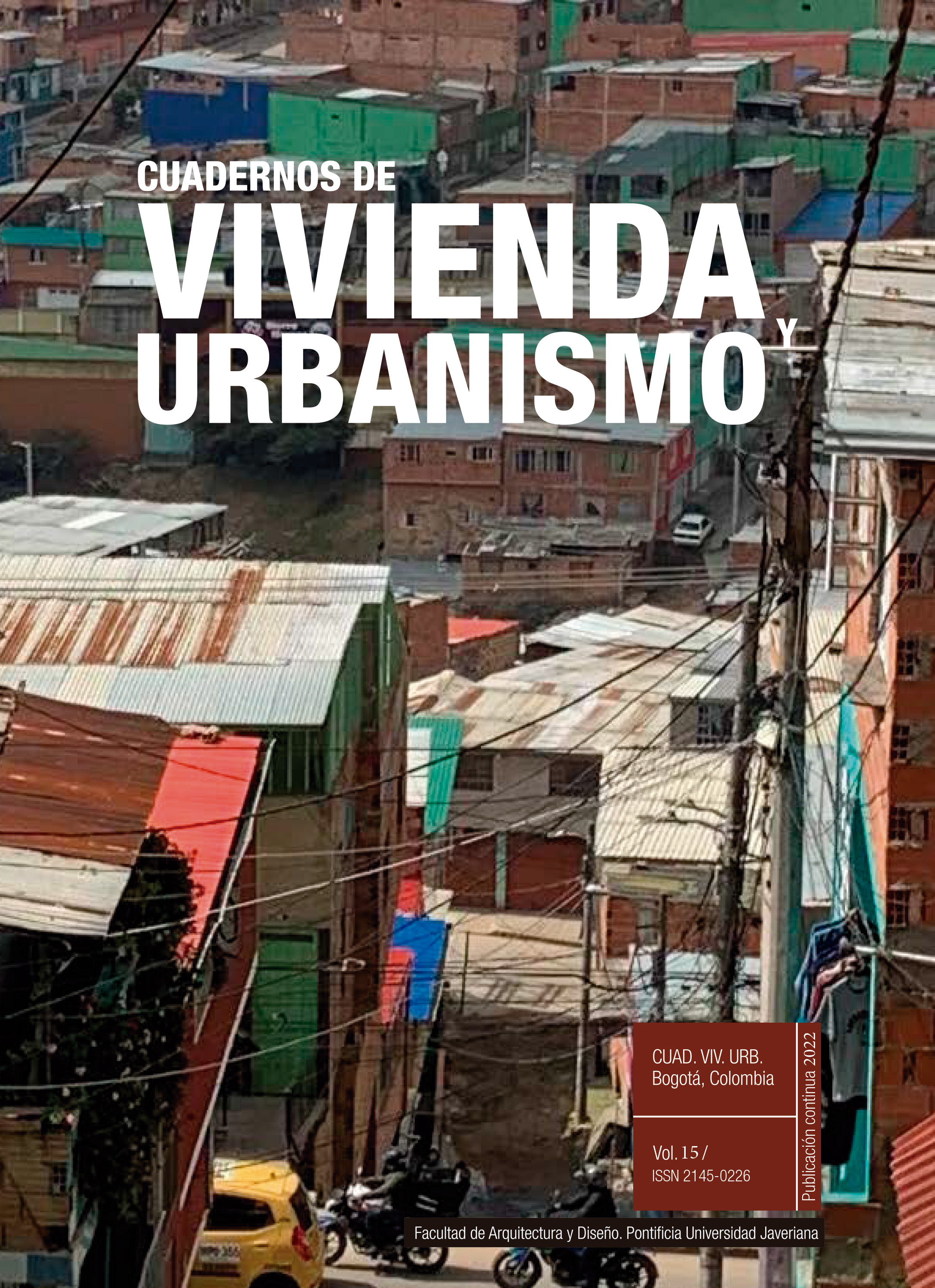Abstract
The objective of this research is to evaluate the metropolitan areas of Santiago, Valparaíso and Concepción, in order to characterize the sociodemographic compositions of the sectors with the greatest possibility of advancing towards the implementation of the 15-minute city. For this purpose, a cartographic survey of 24 essential urban functions less than 15 minutes away was carried out. Sociodemographic profiles of these areas were then constructed, resulting in a set of maps that show the neighborhoods in each city where it is most feasible to implement 15-minute cities. The results reflect the difference in the sociodemographic composition of each neighborhood for the Metropolitan Areas studied. The contribution of this study is to review the distance that may exist between the current urban conformations of these metropolitan areas, in order to project a sustainable city, such as the one advocated by the 15-minute cities.
Alexander, C. (1966). A city is not a tree. City, 122(1), 58-62. https://doi.org/10.1017/CBO9781107415324.004
Berry, B. J. L., & Garrison, W. L. (1958). The Functional Bases of the Central Place Hierarchy. Economic Geography, 34(2), 145. https://doi.org/10.2307/142299
Cai, L., y Liu, A. Y. C. (2015). Wage differentials between immigrants and the native-born in Australia. International Journal of Manpower, 36(3), 374-396. https://doi.org/10.1108/IJM-04-2014-0104
Correa-Parra, J., Vergara-Perucich, J. F., & Aguirre-Nuñez, C. (2020). Towards a Walkable City: Principal Component Analysis for Defining Sub-Centralities in the Santiago Metropolitan Area. Land, 9(10), 362. https://doi.org/10.3390/land9100362
De Castro Leiva, G., Dos Reis, D. S., & Filho, R. D. O. (2020). Estrutura urbana e mobilidade populacional: implicações para o distanciamento social e disseminação da Covid-19. Revista Brasileira de Estudos de População, 37, 1-22. https://doi.org/10.20947/S0102-3098a0118
Ewing, R., Handy, S., Brownson, R., Clemente, O., & Winston, E. (2006) Identifying and measuring urban design qualities related to walkability. Journal of Physical Activity and Health, 3, s223-s240.
Gehl, J. (2017). A Mayor’s Guide to Public Life What’s in this guide ? DKOK.
Hidalgo, A. (2020). Le programme d’Anne Hidalgo. https://annehidalgo2020.com/
INE. (2017). Segunda Entrega de Resultados Definitivos CENSO 2017. http://www.censo2017.cl/wp-content/uploads/2018/05/presentacion_de_la_segunda_entrega_de_resultados_censo2017.pdf.
Lloyd Lawhon, L. (2009). The Neighborhood Unit: Physical Design or Physical Determinism? Journal of Planning History, 8(2), 111-132. https://doi.org/10.1177/1538513208327072
Moreno, C. (2020). Droit de cité - De la “ville-monde” à la “ville du quart d’heure”. Editions de l’Observatoires.
Moreno, C., Allam, Z., Chabaud, D., Gall, C., & Pratlong, F. (2021). Introducing the “15-Minute City”: Sustainability, Resilience and Place Identity in Future Post-Pandemic Cities. Smart Cities, 4(1), 93-111. https://doi.org/10.3390/smartcities4010006
Murthy, V. h. (2015). Making our communities walkable for older adults. Public Health Reports, 130(5), 424-425.
Muxi, Z., Casanovas, R., Cicoletto, A., Fonseca, M., & Gutierrez, B. (2011). ¿Qué aporta la perspectiva de género al urbanismo? Feminismos, 17(1), 105-129.
OECD (2013). OECD Publishing. https://doi.org/10.1787/9789264191808-en
Pozoukidou, G., & Chatziyiannaki, Z. (2021). 15-Minute City: Decomposing the New Urban Planning Eutopia. Sustainability, 13(2), 928. https://doi.org/10.3390/su13020928
Pucher, J., & Dijkstra, L. (2003). Promoting Safe Walking and Cycling to Improve Public Health: Lessons From The Netherlands and Germany. American Journal of Public Health, 93(9), 1509-1516. https://doi.org/10.2105/AJPH.93.9.1509
Rebelo, E. M. (2009). Land economic rent computation for urban planning and fiscal purposes. Land Use Policy, 26(3), 521-534. https://doi.org/10.1016/j.landusepol.2008.07.008
Southworth, M. (2005). Designing the walkable city. Journal of Urban Planning and Development, 131(4), 246-257. https://doi.org/10.1061/(ASCE)0733-9488(2005)131:4(246)
Vergara-Perucich, J.-F., Correa-Parra, J., & Aguirre-Núñez, C. (2020a). Atlas of Spatial Indicators of COVID-19 contagion vulnerability in Chile (1a ed., Vol. 1). Centro Producción del Espacio. https://www.researchgate.net/publication/341030314_Atlas_of_Spatial_Indicators_of_COVID-19_contagion_vulnerability_in_Chile
Vergara-Perucich, J.-F., Correa-Parra, J., & Aguirre-Núñez, C. (2020b). Spatial correlation between COVID-19 propagation and vulnerable urban areas in Santiago de Chile. Critical Housing Analysis, (en prensa).

This work is licensed under a Creative Commons Attribution 4.0 International License.


